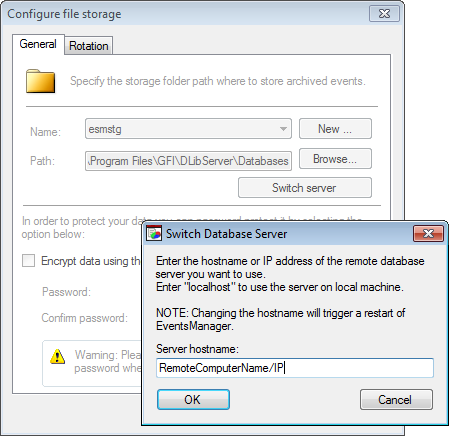
See " Database File System Links" for information on using DBFS Links and " PL/SQL Packages for LOBs and DBFS" for lists of useful DBMS_LOB constants and methods.Ī content store is a collection of documents.Įach content store is identified by a unique absolute path name, represented as a slash ( /) followed by one or more component names that are each separated by a slash. See " DBFS Mounting Interface (Linux and Solaris Only)".ĭBFS Links, Database File System Links, are references from SecureFiles LOB locators to files stored outside the database.ĭBFS Links can be used to migrate SecureFiles from existing tables to other storage. It receives standard file system calls from the FUSE kernel module and translates them into OCI calls to the PL/SQL procedures in the DBFS content store. This does not require any changes to the Linux or Solaris kernels. On Linux and Solaris, the dbfs_client also includes a mount interface that uses the Filesystem in User Space ( FUSE) kernel module to implement a file-system mount point with transparent access to the files stored in the database. The command interface creates a direct connection to the database without requiring an OS mount of DBFS. It implements simple file system commands such as list and copy in a manner that is similar to shell utilities ls and rcp. dbfs_client allows users to copy files in and out of the database from any host on the network. The PL/SQL interface allows database transactions and read consistency to span relational and file data.Ī client command-line interface named dbfs_client runs on each file system client computer. The Database File System offers several access methods.ĭatabase applications can access files in the DBFS store directly, through the PL/SQL interface.


For example, ETL (extraction, transformation, and loading) tools can transparently store staging files in the database and file-based applications can benefit from database features such as Maximum Availability Architecture (MAA) without any changes to the applications.įor client systems, the Database File System offers several access methods. Files in the database can now be transparently accessed using any operating system (OS) program that acts on files. With this interface, access to files in the database is no longer limited to programs specifically written to use BLOB and CLOB programmatic interfaces. Files stored in the database along with relational data are automatically backed up, synchronized to the disaster recovery site using Data Guard, and recovered together.ĭatabase File System (DBFS) is a feature of Oracle Database that makes it easier for users to access and manage files stored in the database. Oracle Database provides much better security, availability, robustness, transactional capability, and scalability than traditional file systems. Conceptually, a database file system is a file system interface placed on top of files and directories that are stored in database tables.Īpplications commonly use the standard SQL data types, BLOBs and CLOBs, to store and retrieve files in the Oracle Database, files such as medical images, invoice images, documents, videos, and other files.


 0 kommentar(er)
0 kommentar(er)
